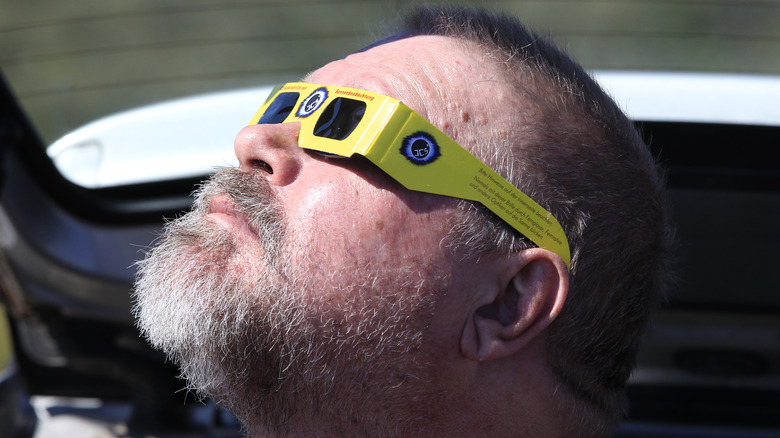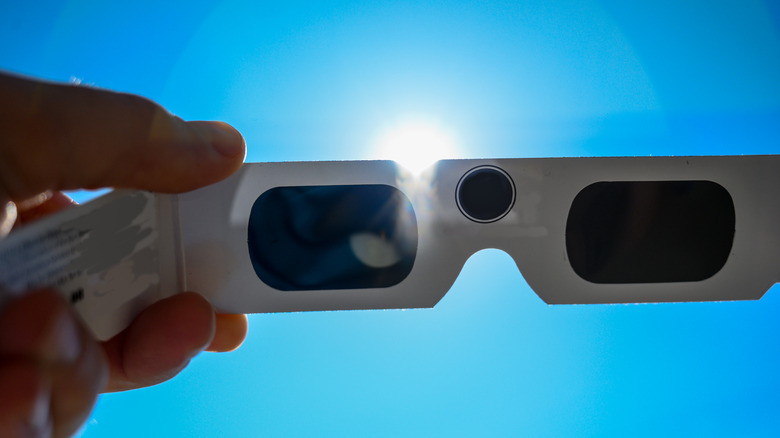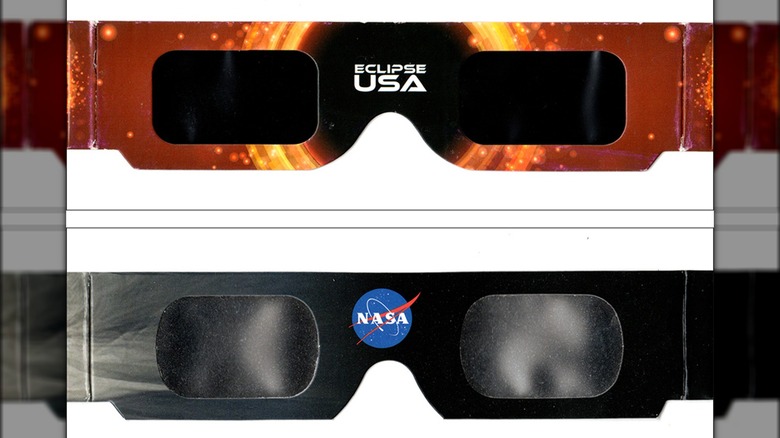How To Tell If Your Solar Eclipse Glasses Are Fake: A Quick Guide
On April 8, 2024, a rare total solar eclipse will be visible from the North American continent. The most important thing you need to properly enjoy this celestial event is a pair of proper solar eclipse glasses, which will allow you to observe the eclipse directly without damaging your eyes. Luckily, there are plenty of excellent solar eclipse glasses readily available to shield your eyes. Just don't try to view it with your phone unless you want to fry the camera.
Unfortunately, as with any major social event, there are always an unscrupulous few looking to make a quick buck from it. In the case of solar eclipses, there's an ever-present danger of individuals attempting to sell useless cardboard as genuine solar eclipse glasses. Not only could this lead to some wasted cash, but if someone tries to watch the eclipse with fake glasses, their eyes could be severely injured.
The vital question is how you're supposed to discern fake solar eclipse glasses from the genuine article. Thankfully, there are some signs you can watch for and moves you can make to mitigate the potential of picking up a pair of counterfeit solar eclipse glasses.
Safe solar shopping
The first thing you should do is try your best to get your solar eclipse glasses from a reputable source. To aid in this process, the American Astronomical Society has compiled a list of safe and reputable solar viewer vendors. Whether you're buying just for yourself or wholesale for an eclipse party, you should endeavor to purchase from one of these vendors to ensure you get real, functioning glasses.
If you're buying your solar eclipse glasses on the spot close to or on the day of the event, you may not have immediate access to the list of reputable vendors. In such a case, you should check the body of the glasses to see the manufacturer's name. Based on an AAS investigation, at least two manufacturing companies have had bad actors attempt to duplicate their products: American Paper Optics and Cangnan County Qiwei Craft Co.
In the case of American Paper Optics glasses, both a name and an address should be printed on it. If it only has a name and no address, it's fake. The report states that the counterfeits attempting to replicate the safe solar viewing glasses produced by Qiwei Craft Co. were, in addition to being fake, unsafe to use to view the eclipse.
Spotting a fake
The way solar eclipse glasses work is by blocking the vast majority of ultraviolet and infrared light from the sun, only letting the bare minimum of visible light through so you can still see the eclipse. Real solar eclipse glasses will use the proper solar filters in their lenses, while fake ones just use black-colored lenses. You can put glasses through a three-stage test to determine if they are fakes.
-
Put the glasses on indoors and take a look around. You shouldn't be able to see anything except for very bright sources of light, and even those should be very faint. If you can see any regular objects, the glasses are fake.
-
Put the glasses on outside on a sunny day. You still should not be able to see anything around you, with the possible exception of the sun from a reflective surface (a puddle, a metal wall, etc.). If you can see anything else, the glasses are fake.
-
With the glasses on, look up at the sun for a fraction of a second. In that brief glance, you should be able to see the sun, but it should only appear as a round disk with a mild brightness, possibly with a colored tint, depending on the filters in the glasses.
If the glasses pass all three tests, they are probably fine to use, though buying them from a verified vendor from the AAS list is still your best bet. If you're still concerned, try to keep your eclipse viewing to no more than 2-3 seconds every five minutes.


